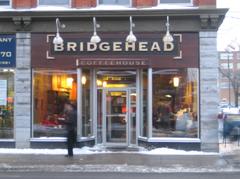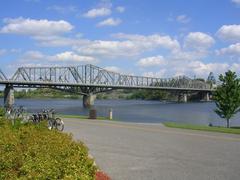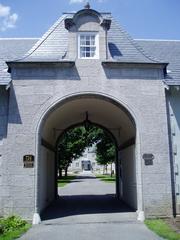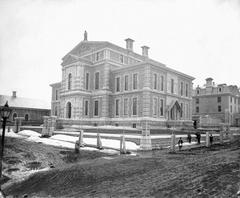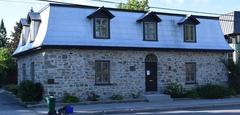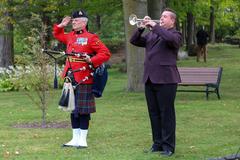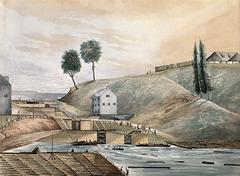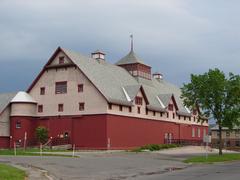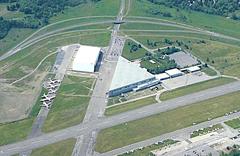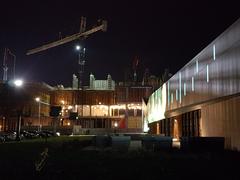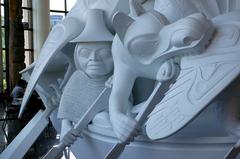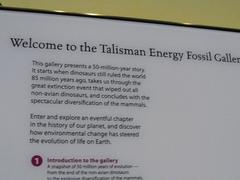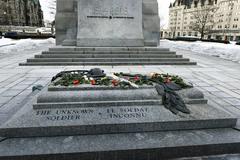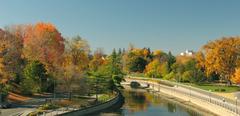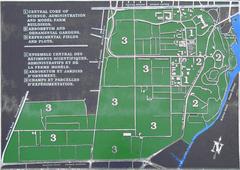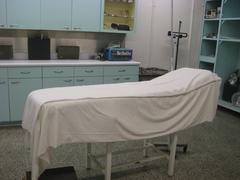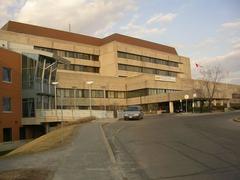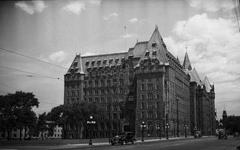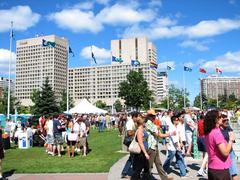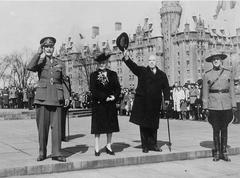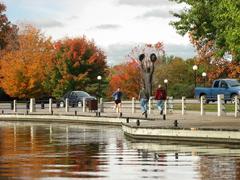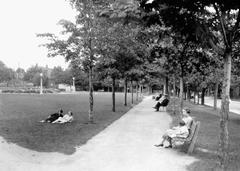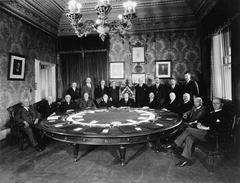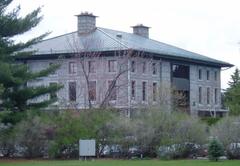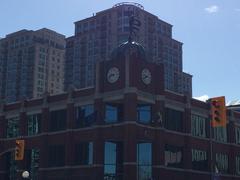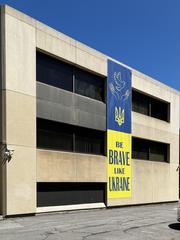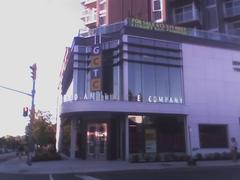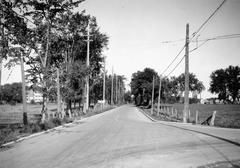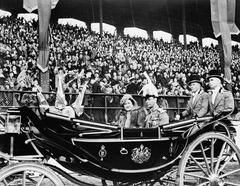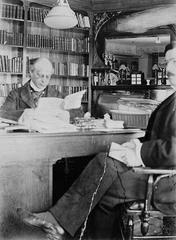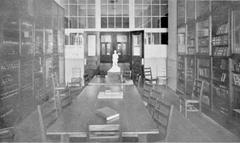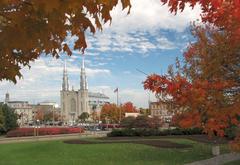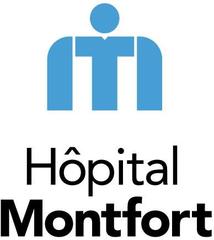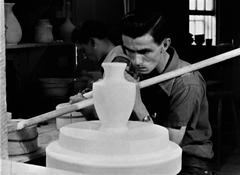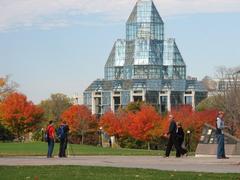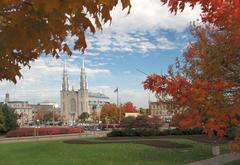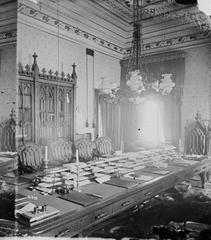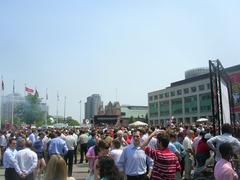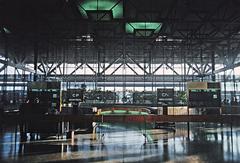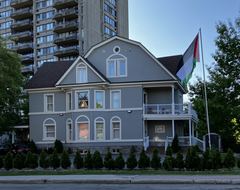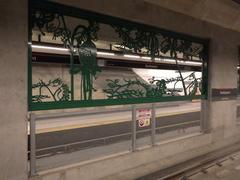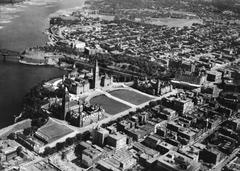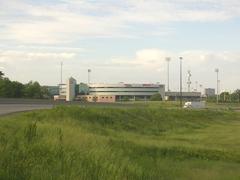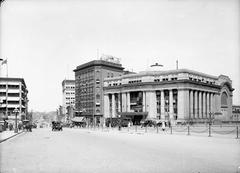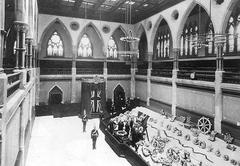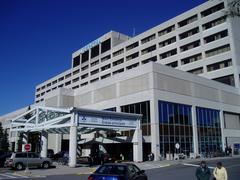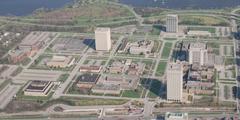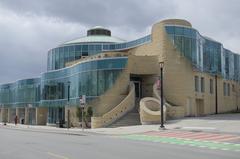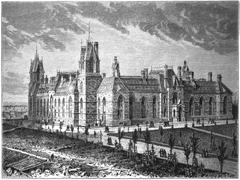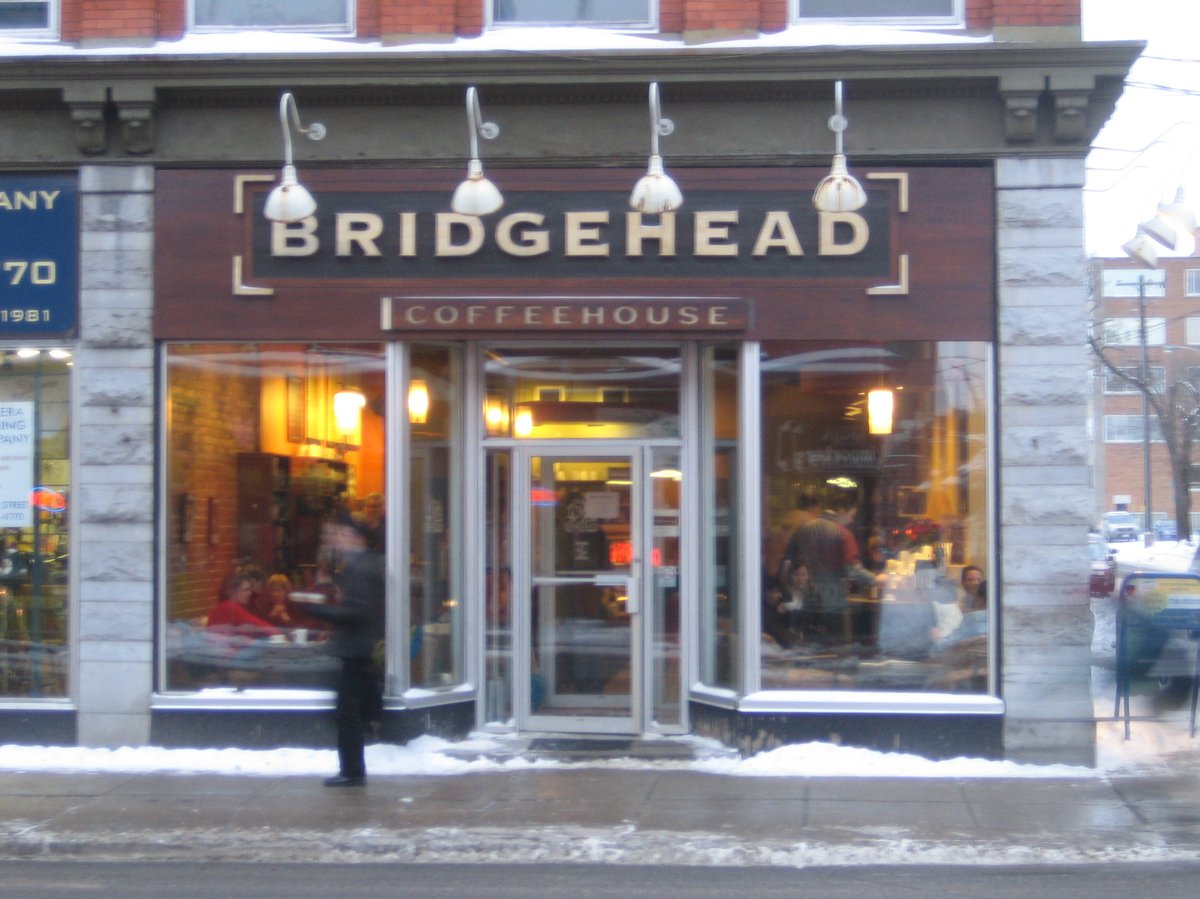
Centretown Heritage Conservation District Ottawa: Visiting Hours, Tickets, and Historical Sites Guide
Date: 14/06/2025
Introduction to Centretown Heritage Conservation District
Located in the heart of Ottawa, the Centretown Heritage Conservation District (CHCD) is a vibrant area that showcases the city’s evolution through its unique architectural and cultural heritage. Established under the Ontario Heritage Act in 1997, Centretown presents a seamless blend of Victorian, Edwardian, and revivalist architecture alongside mid-century modern elements. Visitors can immerse themselves in the district’s historic streets, bustling commercial corridors, and inviting parks, all set within a walkable and accessible neighborhood. With the scenic Rideau Canal—a UNESCO World Heritage Site—forming its border, Centretown is a living testament to Ottawa’s growth as Canada’s capital, offering a rich experience for history enthusiasts, architecture lovers, and casual explorers alike (City of Ottawa, 2024; Ottawa Tourism, 2025).
This guide provides comprehensive details on visiting hours, ticketing, accessibility, travel tips, and key attractions, ensuring a rewarding experience in one of Ottawa’s most cherished heritage neighborhoods (Heritage Ottawa, 2025; The Planet D).
Table of Contents
- Welcome to Centretown: Ottawa’s Historic Heart
- Visitor Information
- Highlights and Notable Sites
- Architectural Character and Urban Fabric
- Key Sites and Buildings
- Visitor Details: Hours, Tickets, Accessibility, and Directions
- Community Life and Everyday Experience
- Conservation and Community Advocacy
- Visual and Virtual Experiences
- Frequently Asked Questions (FAQ)
- Conclusion and Call to Action
- References
Welcome to Centretown, Ottawa’s Historic Heart
Centretown, just south of Parliament Hill, is renowned for its historic neighborhoods, charming streetscapes, and architectural diversity. The area showcases heritage buildings from the late 1800s through the mid-20th century, interspersed with vibrant commercial life and green spaces.
Why Visit Centretown?
Centretown is ideal for those interested in Ottawa’s past and present. Whether you’re drawn to its distinct architecture, lively festivals, or eclectic mix of shops and cafes, you’ll find plenty to explore in this central neighborhood.
Visitor Information
Visiting Hours and Accessibility
- Neighborhood Access: Centretown is an open, public neighborhood accessible 24/7. There is no admission fee to explore the district’s streets, parks, and public spaces.
- Building Access: Many heritage buildings are private residences, offices, or institutions. Public buildings, shops, and parks generally operate during standard business hours (9:00 AM – 6:00 PM), with parks open from dawn to dusk.
- Accessibility: Most streets and parks are accessible, though some older buildings may have limited accessibility. Efforts are ongoing to improve access throughout the district.
Guided Tours and Events
Heritage Ottawa and local organizations offer guided walking tours, especially in spring and summer. These tours require advance registration and may have a nominal fee. Annual events like Doors Open Ottawa provide free access to many heritage buildings, some of which are otherwise closed to the public (Heritage Ottawa, 2025; Doors Open Ottawa).
Getting There
Centretown is easily reached by public transit (OC Transpo buses and O-Train), by foot, or by bicycle. Paid parking is available in nearby lots and on select streets.
Nearby Attractions
- Parliament Hill: Tours and ceremonies within walking distance.
- Rideau Canal: Ideal for walking, biking, or skating in winter.
- National Gallery of Canada: A short distance away, featuring extensive art collections.
- ByWard Market: Lively market with shops, restaurants, and nightlife.
Highlights and Notable Sites
- Historic Architecture: Victorian, Edwardian, and revivalist homes and row houses.
- Bank and Elgin Streets: Lined with heritage storefronts, shops, and restaurants.
- Minto Park and Golden Triangle Park: Green spaces for relaxation and community events.
- Rideau Canal: UNESCO World Heritage Site forming the district’s scenic eastern edge.
Architectural Character and Urban Fabric
Historical Development
The CHCD encompasses a diverse urban area developed alongside the Rideau Canal in the late 19th and early 20th centuries. The district’s urban form includes single-family homes, row houses, early apartment blocks, and later mid-century towers, reflecting Ottawa’s growth as Canada’s capital (City of Ottawa, 2024).
Architectural Styles
- Victorian & Edwardian: Notable for ornate brickwork, wood trim, and asymmetrical façades—especially on Gilmour, Waverley, and MacLaren streets.
- Revivalist Influences: Including Gothic Revival, Queen Anne, and Classical Revival, with features such as steep roofs and bay windows.
- Early 20th-Century Apartments: Modest ornamentation and brick façades.
- Mid-Century Modern: Residential towers on the district’s edges, now part of its layered heritage (City of Ottawa, 2024).
Streetscape Features
Tree-lined boulevards, landscaped front yards, and well-maintained parks define the district’s inviting atmosphere. The Rideau Canal offers a natural border, while Elgin Street serves as a bustling commercial corridor (Ottawa Tourism, 2025).
Adaptive Reuse
Many former residences are now multi-unit dwellings, offices, or diplomatic missions, supporting a diverse and vibrant community.
Key Sites and Notable Buildings
Elgin Street
The district’s commercial core, Elgin Street, is home to:
- First Baptist Church: An example of Gothic Revival architecture.
- Heritage Storefronts: Preserved façades and decorative brickwork.
Minto Park
A designated Heritage Conservation District since 1988, Minto Park is surrounded by early 20th-century homes and is a community gathering spot (City of Ottawa, 2024).
Golden Triangle
A residential enclave with a high concentration of heritage properties, including:
- Gilmour Street Row Houses: Iconic brickwork and decorative details.
- Waverley Street Residences: Revivalist homes, some now embassies or offices.
- Golden Triangle Park: A small community park.
Rideau Canal
A UNESCO World Heritage Site, the canal is central to the district’s history and offers year-round recreation and scenic views (O Canada, 2024).
Apartment Buildings
Early apartment structures are highlighted in Heritage Ottawa’s walking tours, illustrating the district’s evolving residential landscape (Heritage Ottawa, 2025).
Places of Worship
- St. John the Evangelist Anglican Church: Gothic Revival design.
- Centretown United Church: Romanesque features and a history of social activism.
Parks and Walking Tours
Parks such as Minto and Golden Triangle, along with smaller green spaces, enhance the district’s livability. Heritage Ottawa’s seasonal walking tours provide in-depth exploration (Heritage Ottawa, 2025).
Visitor Details: Hours, Tickets, Accessibility, and Directions
- Hours: Outdoor spaces are accessible year-round; most buildings and shops operate 9:00 AM–6:00 PM.
- Tickets: No fee to explore the district or public parks. Guided tours and special events may require registration or a ticket.
- Accessibility: Most sidewalks and paths are wheelchair accessible. Some heritage buildings have limited access, but upgrades are ongoing (Ottawa.ca).
- Getting There: Centrally located and served by OC Transpo buses and O-Train. Walking and biking are encouraged.
Community Life and Everyday Experience
Multiculturalism and Community Engagement
Centretown reflects Ottawa’s bilingual and multicultural spirit, with English and French widely spoken. Community organizations host multicultural festivals and language exchanges, fostering inclusivity (The Planet D).
Local Businesses and Social Life
Bank Street and Somerset Village feature independent shops, cafes, restaurants, and pubs in heritage buildings. ByWard Market, nearby, is a popular destination for local produce and artisanal goods (The Planet D).
Arts, Culture, and Festivals
Centretown is a hub for arts and culture, with galleries, performance spaces, and annual events like Doors Open Ottawa and JazzFest. Many venues are in historic buildings, and festivals bring music, art, and culinary delights to the streets (Doors Open Ottawa).
Accessibility, Transport, and Safety
Accessibility improvements are ongoing, with upgrades to ramps, entrances, and public amenities. The area is well-served by public transit, and cycling is encouraged. Street parking is available but limited.
Housing and Urban Development
Heritage guidelines ensure that new development respects the district’s character. The area features a mix of Victorian homes, early apartments, and modern condos. Safety is maintained through community watch programs and city coordination.
Tips for Visitors
- Wear comfortable shoes for walking.
- Bring a camera to capture historic and vibrant street scenes.
- Check local event calendars for festivals and community events.
- Support local businesses and engage with residents for insider tips.
Conservation and Community Advocacy
Centretown’s heritage is protected by municipal regulations requiring permits for alterations and new construction. Community groups like the Centretown Citizens Community Association (CCCA) advocate for responsible development and heritage preservation (Centretown Citizens, 2025).
Visual and Virtual Experiences
To enhance your visit, explore virtual tours and 3D walkthroughs offered by Heritage Ottawa (Heritage Ottawa Doors Open). High-quality images of Victorian row houses, the Rideau Canal, and festival scenes are recommended, with alt text using keywords like “Centretown Heritage Conservation District visiting hours.”
Frequently Asked Questions (FAQ)
Q: Is there an entrance fee to visit Centretown?
A: No, the district and parks are free to explore.
Q: Where can I find guided walking tours?
A: Heritage Ottawa and community groups offer seasonal tours. Check their websites for schedules.
Q: Is Centretown wheelchair accessible?
A: Many public areas are accessible, with ongoing upgrades to improve access.
Q: What are the best months to visit?
A: Spring to early fall is ideal, with major festivals and pleasant weather.
Q: How do I get to Centretown from the airport?
A: Take a taxi, rideshare, or OC Transpo public transit; the trip takes 20-30 minutes.
Conclusion and Call to Action
The Centretown Heritage Conservation District is a dynamic blend of Ottawa’s past and present, offering visitors a wealth of history, culture, and community engagement. Whether you’re strolling through heritage-lined streets, enjoying local festivals, or participating in a guided tour, Centretown provides an authentic Ottawa experience.
Plan your visit with official resources, utilize interactive tools like the Audiala app for enriched tours, and stay connected with local events to make the most of your trip. Support local businesses, respect heritage sites, and immerse yourself in the vibrant community life that makes Centretown a must-see destination in Canada’s capital.
References and Official Sources for Further Information
- City of Ottawa, 2024, Architectural Character of the Centretown Heritage Conservation District
- Heritage Ottawa, 2025, Heritage Ottawa Walking Tours
- Ottawa Tourism, 2025, Centretown Neighborhood
- The Planet D, 2025, Things to Do in Ottawa
- Heritage Ottawa, 2025, Doors Open Ottawa
- Ottawa Heritage Properties, 2025, Heritage Conservation
- Centretown Citizens, 2025, Heritage Working Group
- Doors Open Ottawa
- O Canada, 2024, Guide to Ottawa’s Top Attractions and Experiences
- City of Ottawa, 2024, Centretown and Minto Park Heritage Conservation District Plan
- Ottawa.ca, 2025, Heritage Facade Improvement Pilot
